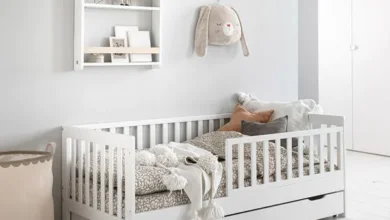Creating a Safe and Child-Friendly Home Environment for Your Toddler

Keeping your toddler safe at home is a vital responsibility for parents and caregivers. Toddlers are naturally curious and have a knack for exploring their surroundings, often oblivious to potential dangers. Therefore, creating a safe and child-friendly home environment becomes crucial to prevent accidents and ensure your child’s well-being. In this comprehensive guide, we will explore various strategies and tips to safeguard your toddler from common household hazards.
1. Window Safety
Windows can pose a significant risk to toddlers, as they can lead to falls and other accidents. Install window guards or stops to limit how far windows can be opened. Make sure you have the right window parts to make the windows safe. Be cautious of blind cords, which can be a strangulation hazard; consider using cordless window coverings.
2. Childproofing Essentials
Childproofing your home is the foundation of toddler safety. Begin by getting down to your toddler’s level to identify potential hazards. Cover electrical outlets with safety plugs, use safety gates to block staircases and rooms with dangerous items, and secure heavy furniture that could tip over.
3. Kitchen Safety
The kitchen can be a hub of activity and potential hazards. Store cleaning products, sharp utensils, and small appliances out of your toddler’s reach. Use stove knob covers to prevent curious fingers from turning on burners, and install cabinet locks to keep your child away from potentially dangerous items.
4. Bathroom Safety
The bathroom presents unique challenges due to water and slippery surfaces. Always supervise bath time and never leave your child unattended near water. Install toilet locks to prevent accidental drowning and keep razors, medications, and cleaning products locked away.
5. Furniture and Appliance Safety
Toddlers love to climb, making unsecured furniture a potential danger. Anchor heavy furniture like bookshelves and dressers to the wall to prevent tipping. Additionally, secure appliances like ovens and refrigerators to prevent them from being pulled down.
6. Toy Selection and Storage
Choose age-appropriate toys that do not have small parts that could be choking hazards. Teach your toddler to clean up after playtime to avoid tripping over toys. Use toy chests with safety hinges to prevent pinched fingers.
7. Cord and Wire Management
Keep cords and wires out of your toddler’s reach. This includes electrical cords, blinds, cords, and even chargers. Consider using cord organizers or covers to prevent entanglement or chewing.
8. Fire and Carbon Monoxide Safety
Install smoke detectors and carbon monoxide alarms throughout your home, especially in sleeping areas. Teach your child about the dangers of fire and the importance of staying away from stoves, candles, and heaters.
9. Plant Safety
Some indoor plants can be toxic if ingested. Research the plants in your home and ensure they are safe for children. If you’re unsure, consider moving plants to higher shelves or areas that your toddler cannot access.
10. Supervision and Education
While childproofing is crucial, constant supervision is equally important. Toddlers are quick and unpredictable, and accidents can happen in the blink of an eye. Additionally, educate your child about household rules and potential dangers. Use simple language and consistent reminders.
Creating a safe home environment for your toddler requires a combination of vigilance, preparation, and education. By following these comprehensive strategies, you can significantly reduce the risk of accidents and provide your child with the freedom to explore their surroundings safely. Remember that no safety measure is foolproof, so staying informed and proactive is the key to ensuring your toddler’s well-being throughout their developmental journey.
Finally!
In conclusion, crafting a safe and nurturing home environment for your toddler demands ongoing dedication and meticulous attention to detail. By implementing the strategies outlined in this guide, you can foster a space where your child can thrive without unnecessary risks. Always remember that as your toddler grows, their abilities and interests evolve, necessitating regular reassessment and adjustments to your safety measures.
Maintaining open communication with your child as they develop will enable you to impart the importance of safety rules and precautions effectively. As a parent or caregiver, your role extends beyond merely safeguarding against physical hazards; it includes nurturing a sense of responsibility and awareness in your child.
Ultimately, a safe home nurtures not only your toddler’s physical well-being but also their emotional and cognitive development. By prioritizing safety, you provide the foundation for a happy and secure childhood, where exploration and discovery can flourish under the protective umbrella of a thoughtfully childproofed environment.




